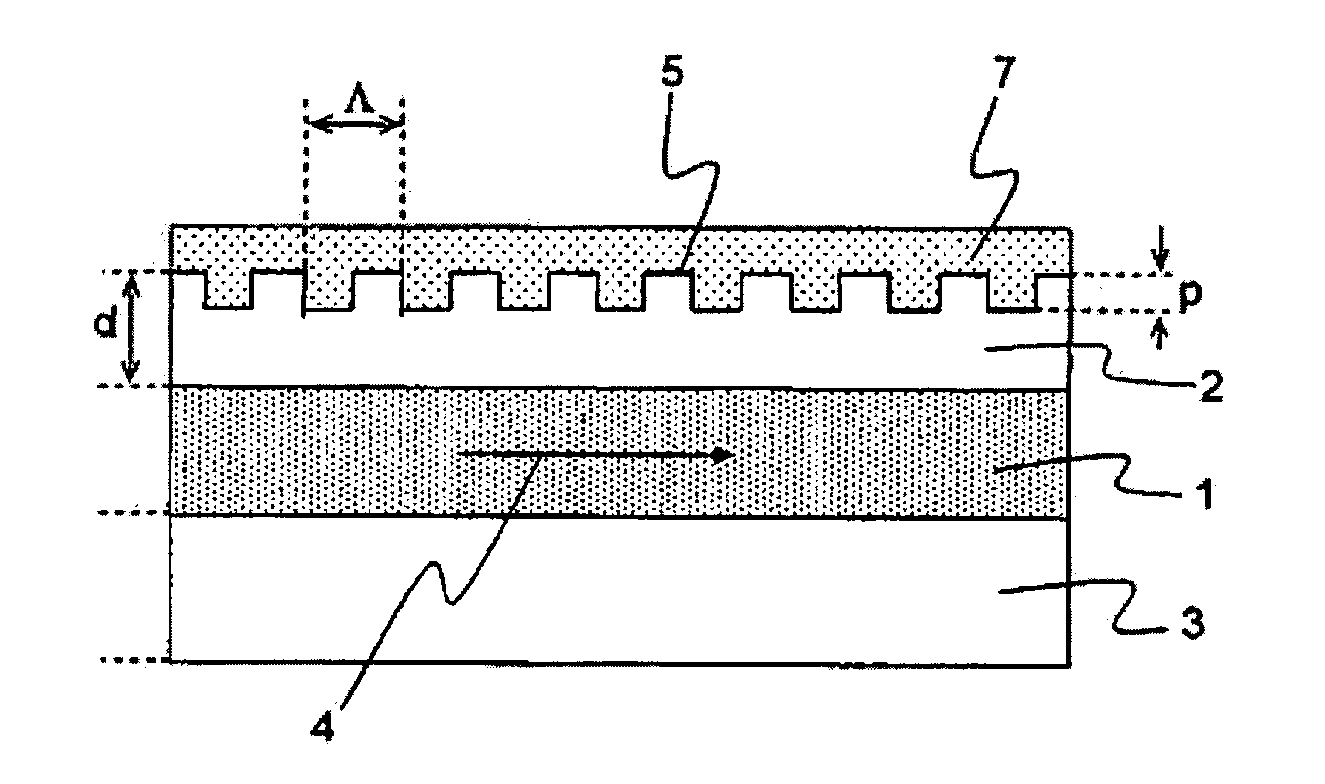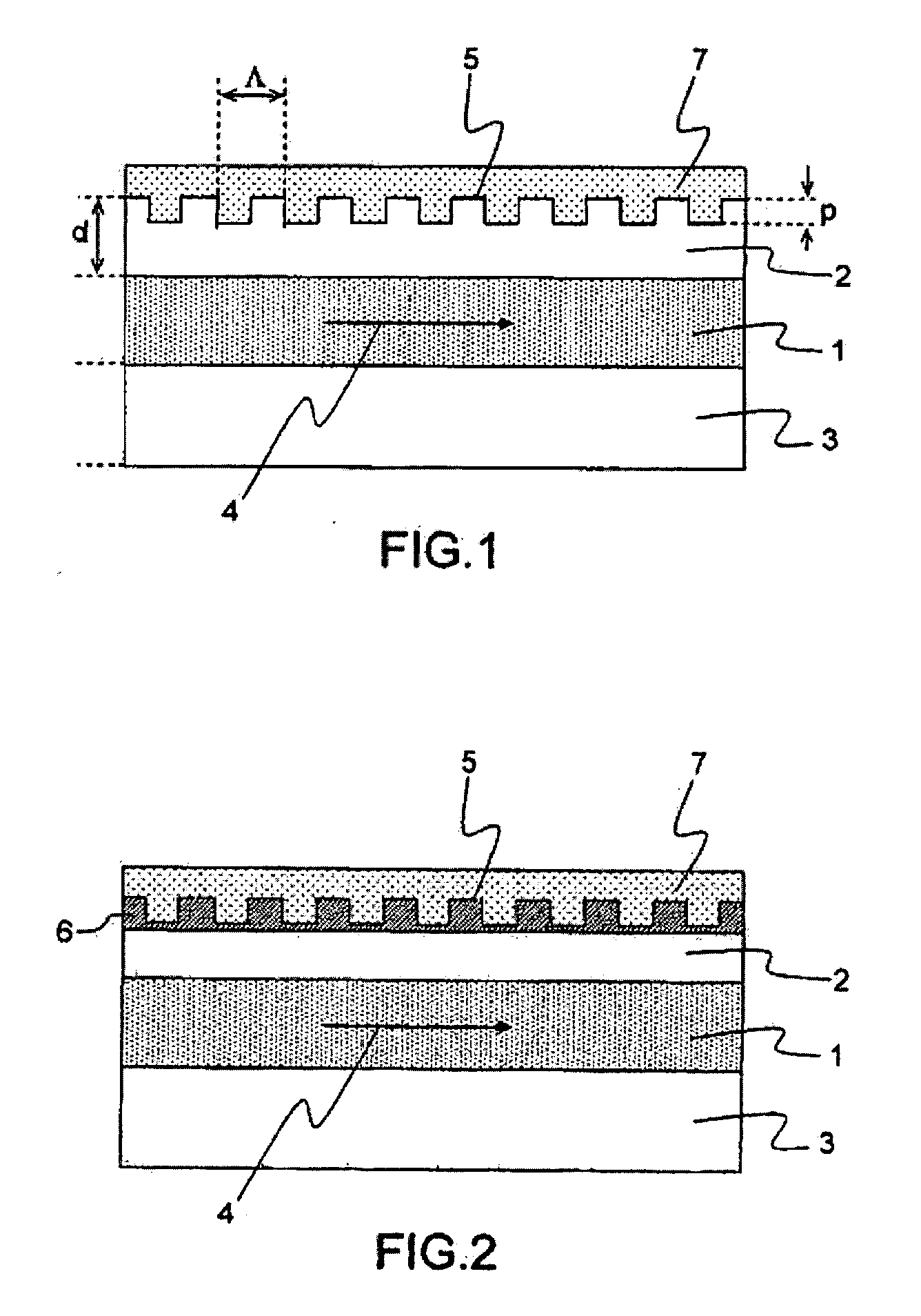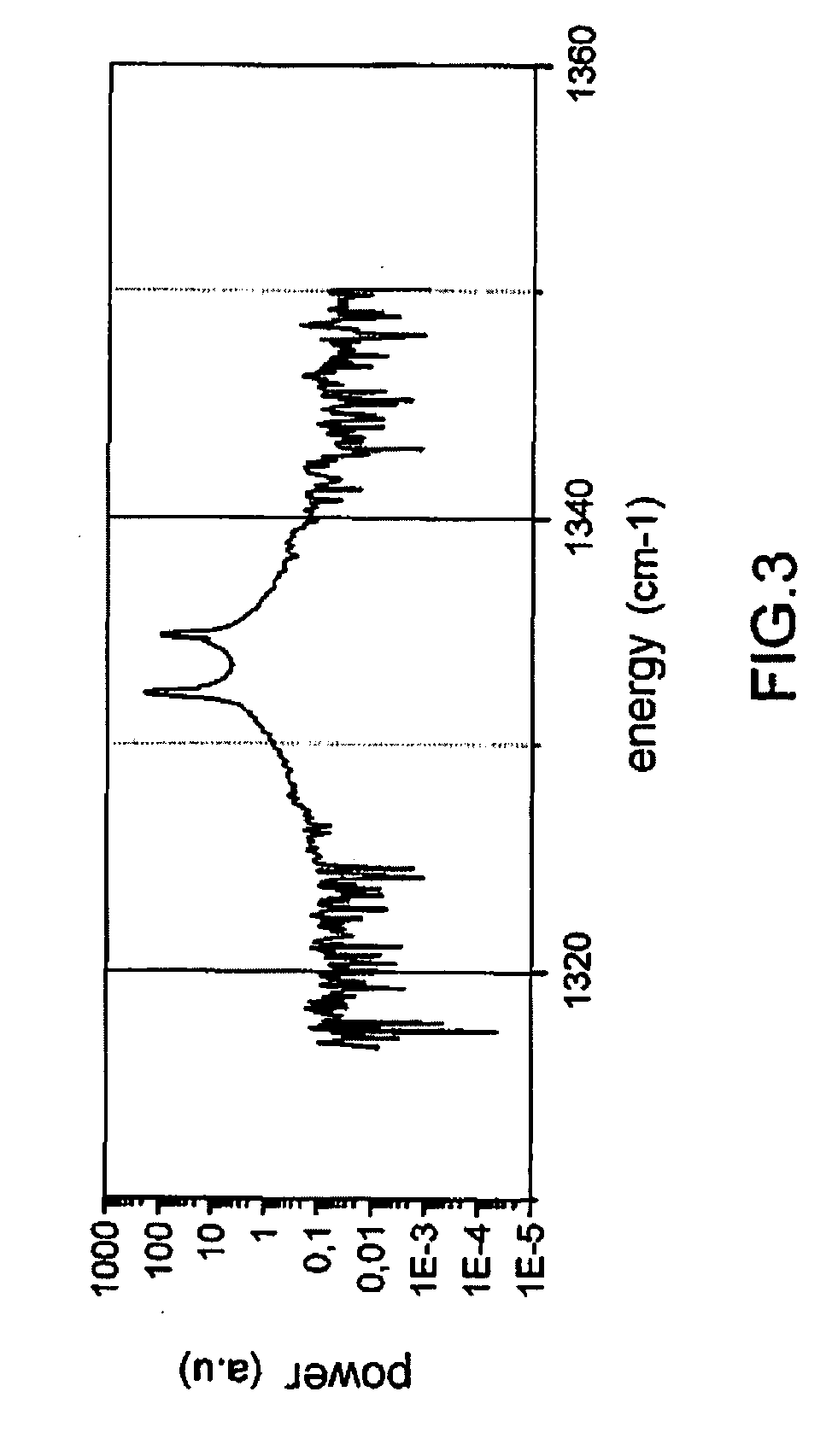Strong distributed feedback semiconductor laser
a semiconductor laser and distributed feedback technology, applied in semiconductor lasers, laser optical resonator construction, laser details, etc., can solve the problems of difficult control of distributed feedback, difficult to achieve technologically, and loss modulation of feedback, so as to achieve simple control and implement the effect of not affecting the laser's performance levels
- Summary
- Abstract
- Description
- Claims
- Application Information
AI Technical Summary
Benefits of technology
Problems solved by technology
Method used
Image
Examples
Embodiment Construction
[0034]FIG. 1 is a simplified diagram of the laser according to the invention. The key lies in understanding the physical phenomena that occur in the laser and how to control them.
[0035]In practice, in the inventive laser, thanks to an appropriate stack of layers forming the active area 1, and thanks to a top waveguide 2 consisting of a non-doped or weakly-doped (that is, introducing a variation of the refractive index less than 10%) semiconductor material, a coupling is obtained between the surface waves, also called plasmons, of the metal structure 7 which covers the grating 5 located above the top waveguide 2 and the modes guided by the semiconductor layers 2 and 3. This coupling introduces an index modulation without additional loss. This physical phenomenon is described in the document by M. CARRAS and A. DE ROSSI entitled “Photonic modes of metallodielectric periodic waveguides in the midinfrared spectral range”, Physical Review B, 74, 235120 (2006). Moreover, the French patent...
PUM
 Login to View More
Login to View More Abstract
Description
Claims
Application Information
 Login to View More
Login to View More - R&D
- Intellectual Property
- Life Sciences
- Materials
- Tech Scout
- Unparalleled Data Quality
- Higher Quality Content
- 60% Fewer Hallucinations
Browse by: Latest US Patents, China's latest patents, Technical Efficacy Thesaurus, Application Domain, Technology Topic, Popular Technical Reports.
© 2025 PatSnap. All rights reserved.Legal|Privacy policy|Modern Slavery Act Transparency Statement|Sitemap|About US| Contact US: help@patsnap.com



